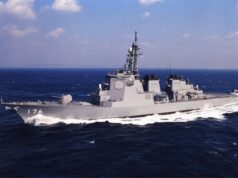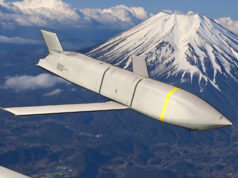In response to North Korea’s ballistic missile launch, two US Air Force B-1B Lancer bombers joined their counterparts from South Korea and Japan for a patrol.
The mission was in direct response to North Korea’s launch of intercontinental ballistic missiles.
Gen. Terrence J. O’Shaughnessy, the Pacific Air Forces commander said:
“North Korea remains the most urgent threat to regional stability.
Diplomacy remains the lead; however, we have a responsibility to our allies and our nation to showcase our unwavering commitment while planning for the worst-case scenario.
If called upon, we are ready to respond with rapid, lethal, and overwhelming force at a time and place of our choosing.”
After taking off from Andersen Air Force Base, Guam, the B-1s flew to Japanese airspace, where they were joined by two Koku Jieitai (Japan Air Self Defense Force) F-2 fighter jets. The B-1s then flew over the Korean Peninsula where they were joined by four South Korean air force F-15 fighter jets. The B-1s then performed a low-pass over Osan Air Base, South Korea, before leaving South Korean airspace and returning to Guam.
According to a press release:
“Throughout the approximately 10-hour mission, the aircrews practiced intercept and formation training, enabling them to improve their combined capabilities and tactical skills, while also strengthening the long standing military-to-military relationships in the Indo-Asia-Pacific region.
U.S. Pacific Command maintains flexible bomber and fighter capabilities in the Indo-Asia-Pacific theater, retaining the ability to quickly respond to any regional threat in order to defend the U.S. homeland and in support of U.S. allies.”






